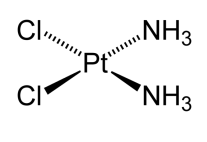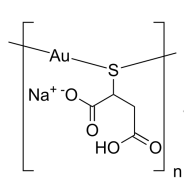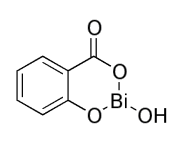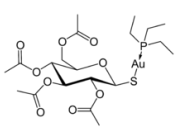Chapter 23 - Toxic Effects of Metals
1/88
Earn XP
Description and Tags
Exam Three
Name | Mastery | Learn | Test | Matching | Spaced |
|---|
No study sessions yet.
89 Terms
Rainwater → Rivers and underground water → The ocean → Precipitates as sediment or is taken up into rainwater
Fill in the blank…
Metals are redistributed naturally in the environment by both geologic and biologic cycles. What is the chain of redistribution in the environment?
Biomagnification/food
Fill in the blank…
( ) by plants and animals results in incorporation into ( ) cycles.
Chemotherapeutic/toxicity
Fill in the blank…
Metals and metal compounds are used in ( ) agents due to their potential ( ).
1) Platinum
Potential compounds
2) Gallium
3) Titanium
What types of metal compounds are used as chemotherapeutic agents?

Aluminum
A metal used in antacids and buffered analgesics

Bismuth
A metal used to treat peptic ulcers.

Lithium
A metal used to treat mania and bipolar disorders.
Gold
A metal used to treat arthritis.

Mimic/homeostasis
Fill in the blank…
Any “free” toxic metal would be potentially toxic due to reactive potential. Toxic metals ( ) essential metals or elements and disrupt ( ).
Zinc
Cadmium, copper, and nickel mimic which essential metal?
Potassium
Thallium mimics which essential nutrient?
Iron
Manganese mimics which essential nutrient?
Phosphate
Arsenate and vanadate mimic which essential nutrient?
Sulfate
Selenate, molybdate, and chromate mimic which essential nutrient?
Protein/cysteine
Fill in the blank…
( ) binding of metals is a critical aspect of essential and toxic metal metabolism. Many play a role in the disposition of metals in the body. Metals vary in their preferred site of binding and bind to a variety of amino acid residues, i.e. ( ) sulfurs are preferred by cadmium and mercury.
Metallothioneins
A very important class of metal-binding proteins. They function in essential metal homeostasis and metal detoxification. Their thiol ligands provide the basis for high-affinity binding of several essential and toxic metals. They are highly inducible by a variety of metals.
Transferrin
A glycoprotein that binds most of the Fe(III) in plasma and helps transport iron across cell membranes. It also transports aluminum and manganese.
Ferritin
A storage protein for iron. It may serve as a general metal-detoxicant protein by binding a variety of toxic metals, like cadmium and beryllium.
Ceruloplasmin
A copper-containing glycoprotein in plasma.
Serum albumin and hemoglobin
Proteins that binds metals non-specifically and participate in metal transport and tissue distribution.
1) Valence state
2) Type of metal compound
3) Physical state
The toxic potential of metals is affected by what three characteristics?
1) Inhibition of enzymes
2) Induction of oxidative damage
Metals in their ionic form can be very reactive and can interact with biological systems in a large variety of ways. Two main ways are what?
Reactive oxygen species/redox active
Fill in the blank…
Metal-mediated oxidative damage is often caused by the formation of ( ) and the displacement of ( ) essential elements.
1) Prohibit uptake
2) Aid excretion
3) Amplify long-term storage in a toxicologically-inert form
4) A cascade of molecular/genetic responses that reduce toxicity
Adaptation to metals is acquired after the first few exposures and can be long-lasting or transient. Adaptation can affect can occur in what four ways?
1) Pre-born babies - metals are teratogenic
2) Young children - due to less-developed BBB
3) Elderly - more susceptible than younger adults
What three age groups are more susceptible to metal toxicity?
Entry
Fill in the blank…
The site of ( ) is often the most affected organ.
1) Smoking
2) Alcohol
3) Diet - alters gastrointestinal absorption of various metals
What three life-style factors affect the toxicity of metals and how do they affect it?
1) Concentrations in blood or urine
2) Expression of genes that play protective roles against metal toxicity
What are two main exposure biomarkers of metals?
Recent/acute/mercury/arsenic/external
Fill in the blank…
Blood and urine concentrations are usually reflective of more ( ) exposures and correlate with ( ) adverse effects. Hair can be useful in assessing exposure to metals like ( ) and ( ) over the period of its growth: however, metal deposits from ( ) contamination may complicate analysis.
Metal chelators
Compounds that complex with the metal and enhance its excretion. They are typically used in the treatment of metal poisoning. They are non-specific and will interact with a number of metals, eliminating more than the metal of concern. It is usually considered a secondary alternative.
Arsenic (As)
A metalloid that is widely distributed in nature.
Arsine
AsH3. A gaseous chemical.
Organo-Arsenicals
Compounds including arsenilic acid, arsenosugars, and several methylated forms produced by biotransformation in various organisms, like humans.
1) Pesticides
2) Herbicides
3) Agricultural products
Where can you be exposed to arsenic occupationally, meaning the manufacture of what compounds results in exposure?
1) Water obtained from natural sources
2) Coal
3) Seafood (contains an organic form called arsenobetaine that is much less toxic than the inorganic forms)
Environmental exposure to arsenic occurs in which ways?
Mees’ Line
A characteristic white band formed across the fingernails following arsenic exposure. It usually appears six weeks after the onset of symptoms.
Past/current/current
Fill in the blank…
Arsenic in the fingernails and hair is a biomarker for ( ) and ( ) exposures, while urinary arsenic is a good indicator of ( ) exposure.
Methylation
This process modifies inorganic arsenic compounds and is not a detoxification process. In fact, compounds that are modified in this way are highly toxic. Some animals species lack the capacity to conduct this process on arsenic compounds, which is a form of adaptation.
Arsenic (III)
These compounds are thiol-reactive and can inhibit enzymes or alter proteins by reacting with thiol groups. They will often inhibit the conversion of pyruvate to acetyl-CoA, thus blocking the citric acid cycle and causing neuropathy.
Arsenate (V)
A form of arsenic. It serves as an uncoupler of mitochondrial oxidative phosphorylation. It works by mimicking phosphate in the formation of ATP.
Arsine (AsH3)
A gas form of arsenic that is a potent hemolytic agent. Exposure to this compound produces acute symptoms of nausea, vomiting, shortness of breath, and headache.
Oxidative damage/methylation/instability/repair
Fill in the blank…
Arsenic and its metabolites have been shown to produce ( ), alteration in DNA ( ) status, genomic ( ), and impaired DNA damage ( ).
Mucous membranes/encephalopathy
Fill in the blank…
Acute arsenic exposure can damage ( ) of the gastrointestinal tract, causing irritation and sloughing. It can also cause ( ), producing headache, lethargy, mental confusion, hallucinations, seizures, and even coma.
Symptomatic/sulfhydryl
Fill in the blank…
For acute arsenic poisoning, treatment is ( ), with particular attention paid to fluid volume replacement and support of blood pressure. Also, oral chelators containing ( ) groups are effective in removing arsenic from the body.
Skin/cancer/liver/neuropathy
Fill in the blank…
Chronic arsenic toxicity mainly affects the ( ). It causes hyperpigmentation and hypopigmentation between six months and three years of exposure. Skin ( ) and ( ) injury also result. Repeated exposure can also cause peripheral ( ).
Lead (Pb)
A metal that is easy to work with and smelts easily, but it is resistant to corrosion and can combine with other metals to form various alloys. It mainly exists in the divalent form.
Human/biodegradable
Fill in the blank…
Environmental lead comes mainly from ( ) activity and is not ( ).
Hemoglobin/tissue/soft/kidney
Fill in the blank…
99% of lead in blood erythrocytes is bound to ( ), while only 1% of circulating lead in serum is available for ( ) distribution. It is initially distributed to ( ) tissues like the kidney and liver, then redistributed to skeleton, teeth, and hair. The major route of excretion is the ( ).
Central Nervous System (CNS)/neuropathy/hypertension
Fill in the blank…
Toxic effects of lead range from inhibition of enzymes to the production of severe pathology or death. Children are most sensitive to effects in the ( ), while in adults, ( ) and ( ) are concerns.
Calcium/neurotransmitter
Fill in the blank…
Lead may act as a surrogate for ( ) and affects its homeostasis. It also affects virtually every ( ) system in the brain, including glutamatergic, dopaminergic, and cholinergic systems. These systems play a key role in cognitive function, learning, and memory.
Demyelination/axonal
Fill in the blank…
In adults, lead exposure contributes to peripheral neuropathy, which is characterized by segmental ( ) and ( ) degeneration.
Hematologic/anemia
Fill in the blank…
Lead has multiple ( ) effects, like increased urinary porphyrins, coproporphyrins, and aminolevulinic acid (ALA) to ( ).
Bone/half-life/bone mineral density (BMD)
Fill in the blank…
Lead substitutes for calcium in ( ). It has an extremely long ( ) and it can affect bone by interfering with metabolic and homeostatic mechanisms. Children exposed to lead had higher ( ), predisposing them to osteoporosis later in life.
Inhibition/ROS/zinc/proteins
Fill in the blank…
Inorganic lead compounds were recently classified as probably carcinogenic to humans. Lead does not appear to be directly genotoxic, but may interact with other toxicants to facilitate chemical carcinogenesis. Lead-induced carcinogenesis can occur by these mechanisms:
1) ( ) of DNA synthesis/repair
2) Generation of ( ) with oxidative damage
3) Substitution of ( ) in transcriptional regulators
4) Interaction with DNA-binding ( )
5) Aberrant gene expression
Dimercaptosuccinic acid (DMSA), an oral chelator
What oral treatment is given for lead poisoning? It is only given to workmen with incredibly high blood levels, but does not improve long-term exposure in children.
Mercury (Hg)
A metal compound that is in its liquid state at room temperature. Its vapor form is more hazardous than the liquid form. It forms inorganic salts with elements such as chlorine, sulfur, or oxygen and can form a number of stable organometallic compounds by attaching to one or two carbon atoms.
Methyl mercury
What is the most toxic form of mercury?
Volcanic eruptions and evaporation from oceans/soils
Emissions from metal mining and smelting
What are the natural and anthropogenic sources of mercury?
It enters the aquatic food chain starting with plankton, then herbivorous fish, then carnivorous fish, sea mammals, and humans
How can you be exposed to methylmercury through food?
1) The working environment (chloralkali industry)
2) Manufacture of scientific and dentistry instruments
3) Processing and extraction of gold
Where can you accidentally inhale mercury vapor?
Mercury Vapor
A form of mercury that is readily absorbed in the lungs, rapidly diffuses into the blood, and distributes to all tissues in the body due to its high lipid solubility. A significant portion of it crosses the blood-brain barrier causing neurotoxicity and developmental toxicity.
Liquid Metallic Mercury
A form of mercury that is poorly absorbed by the gastrointestinal tract and is not biologically reactive.
Inorganic Mercury
A form of mercury that is poorly absorbed from the gastrointestinal tract. The kidney is its major target organ for toxicity.
Gastrointestinal tract/brain/blood/slowly/paresthesia/ataxia
Fill in the blank…
Methylmercury is well absorbed from the ( ) and distributed to all tissues in about 30 hours. Around 10% of it is distributed to the ( ) while 5% remains in the ( ). It can accumulate in hair and is ( ) metabolized to inorganic mercury by microflora in the intestine. Methylmercury can cause neurotoxicity, presenting as ( ) and ( ), or numbness/tingling around mouth and clumsiness/difficulty swallowing and articulating words.
Proteins/microtubule/enzymes/synthesis
Fill in the blank…
High-affinity binding of divalent mercury to sulfhydryl groups of ( ) in cells is an important mechanism for producing non-specific cell injury or cell death. It can also cause interruption of ( ) formation, inhibition of ( ), oxidative stress, interruption of DNA and protein ( ), and autoimmune responses.
In rats, it caused overexpression of metallothionein and glutathione-system related genes
What is an example of an adaptive mechanism caused by exposure to mercury?
Non-absorbable Thiol Resin
Oral administration of this medication prevents biliary excretion and reabsorption by the intestine. It binds mercury and enhances fecal excretion.
Hemodialysis/chelating
Fill in the blank…
To treat mercury poisoning, ( ) may be the first measure along with administration of ( ) agents for mercury, like EDTA, cysteine, and penicillamine.
Thimerosal
A vaccine preservative containing an ethylmercury radical attached to the sulfur group of thiosalicylate. Other mercury-containing compounds have been replaced for safer drugs in treatment of various issues.
Cadmium
A transition metal that is used in batteries and color pigments for paints and plastics, among other things. It ranks close to lead and mercury as one of the top toxic substances.
1) Soil contaminated with industrial emissions and fertilizers
2) Cigarette smoking
3) Cereal grains like rice and wheat
4) Shellfish
Where can one be exposed to cadmium?
Increased/albumin/liver/metallothionein (MT)
Fill in the blank…
Gastrointestinal absorption of cadmium is limited to 5-10% of a given dose but can be ( ) by dietary deficiencies of calcium or ion and by diets low in protein. It is transported in blood by binding to ( ) and other larger molecular-weight proteins. It is then deposited in the ( ) and to a lesser extent, the kidney. In these organs, it induces the synthesize of ( ).
Rare/gastrointestinal epithelium
Fill in the blank…
Acute exposure to cadmium, which is ( ), results in irritation of the ( ), inducing vomiting, nausea, and abdominal pain. The chronic effects of cadmium, however, are more intense than acute effects.
Bone/renal/D/calcium/calcification/density
Fill in the blank…
Long-term consumption of cadmium results in ( ) deformities and ( ) dysfunction. Vitamin ( ) deficiency and other nutritional deficiencies are thought to be cofactors.
Cadmium affects ( ) metabolism, leading to excess excretion due to renal issues.
Cadmium in bones interferes with ( ) and remodeling and causes loss of bone ( ) and increased bone fractures.
None. Chelating therapy was found to have big adverse effects.
What is the treatment for cadmium toxicity?
Nickel (Ni)
A metal that is strong, resistant to corrosion, and very conductive of heat and electricity. It is used in many metal alloys.
Occupational exposure through inhalation of aerosols, dusts, or fumes and dermal contact in nickel-using operations
Exposure in nature is very common, but not enough to cause toxicity
How does exposure to Nickel occur?
Contact dermititus due to exposure to airborne nickel, liquid nickel solutions, or prolonged skin contact with metal items like coins and jewelry
What is the most common adverse effect of Nickel toxicity?
Nickel carbonyl/acute
Fill in the blank…
Metallic nickel combines with carbon monoxide to form ( ), which decomposes upon heating. It is extremely toxic and often causes ( ) toxicity. It starts with headache, nausea, and vomiting followed by coughing, cyanosis, stomach symptoms, and weakness.
Respiratory/crystals/chromosomal/zinc/metabolism
Fill in the blank…
Nickel is a ( ) tract carcinogen, leading to development of water-insoluble ( ) that were responsible for lung and nasal cancers. Nickel also produces ( ) abnormalities in lymphocytes and renal cells, replaces ( ) in binding sites of DNA-binding proteins, and interferes with ( ) of calcium, iron, manganese, and magnesium.
1) Sodium diethylcarbodithioate (DDTC)
2) Disulfiram
3) D-penicillamine
4) DMPS
What chelating agents are used to treat nickel poisoning?
Copper
A metal that is an essential element widely distributed in nature. Exposure to this metal often occurs through food, beverages, drinking water, and inhaling particulates in industry.
Gastrointestinal/necrosis
Effects of small copper ingestion include ( ) symptoms while ingestion of large amount of copper salts, i.e. copper sulfate, results in hepatic ( ) and death.
D-penicillamine/Trien/zinc acetate/tetrathiomolybdate
Fill in the blank…
Treatment of copper poisoning includes chelation with ( ), ( ), ( ), and ( ). Combination of the last two compounds is more effective.
Iron
A very abundant transition metal that mainly exists in the ferrous and ferric forms in biological systems. Toxicity of this compound comes into play with deficiencies, accidental acute exposures, and chronic overloads as a consequence of diet and frequent blood transfusions.
Most is bound to hemoglobin, myoglobin, and other enzymes, while the rest is bound to storage proteins like ferritin.
Common/deferoxamine
Fill in the blank…
Acute iron poisoning is the most ( ) cause of acute toxicity, causing abdominal pain, diarrhea, and vomiting. Severe toxicity, however, causes cyanosis, acidosis, and cardiac collapse. Supportive therapy and iron chelation with ( ) should be used as soon as possible.
Zinc
An essential metal whose deficiency results in severe health consequences. Toxicity of this compound is uncommon and occurs only at high exposure levels, but it has a slew of neurological, reproductive, gastrointestinal, immunological, and dermal symptoms. It is also very widespread in the environment (food, water, etc) and its major route of intake is through the diet.
Neurotransmitters/Cu-Zn-superoxide dismutase
Fill in the blank…
Zinc can act as a ( ) for normal brain functions. However, a deficiency of zinc may alter the activity of the antioxidant enzyme ( ), resulting in free radicals that are damaging cell membranes.
1) Damage to exocrine pancreas
2) Fibrosis and necrosis of exocrine pancreatic cells
What are the symptoms of zinc poisoning in relation to the pancreas?